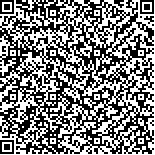| 摘要: |
| [目的]通过分析2007—2015年关中—天水经济区的人口数量时空变化趋势、分布特征和人口变化的影响因素,可为经济区人口政策、产业布局、城市规划等方面发展提供决策参考。[方法]文章采用城市首位度、人口不均衡指数和GIS手段对关中—天水经济区人口分布特征及影响因素进行研究。[结果](1)2007—2015年,经济区平均人口自然增长率增幅逐年降低,但人口总数仍保持稳定增长; 西安市人口规模不断扩大,城市集聚效应不断增强。(2)经济区人口不均衡指数连年上升,人口分布呈现不均衡化发展,相对东部沿海地区,较高的人口不均衡指数表明其人口分布不均较为显著。(3)经济区人口密度低值区集中分布在秦岭北麓、渭北旱塬沟壑区和秦岭南麓; 人口密度高值区与人口分布热点区都集中分布在以西安、咸阳为中心的大城市; 人口密度分布等级除西安变化明显外,其余各市均保持稳定,但各等级人口密度值均发生变化,如西安市单位面积内人口数量逐年增加。(4)经济发展水平、自然环境、文化因素是影响经济区人口分布的重要因素。[结论]经济区在未来发展中,不仅要考虑区域内人口流动情况,自然地理环境、社会文化因素,还要提高经济欠发达地区的经济水平,不断促进区域人口分布的均衡化。 |
| 关键词: 关中—天水经济区人口密度时空分布影响因素GIS |
| DOI: |
| 分类号:C922 |
| 基金项目:陕西省科技厅重点研发计划项目(2017KJXX 74) |
|
| STUDY ON POPULATION DISTRIBUTION AND INFLUENCING FACTORS OF GUANZHONG TIANSHUI ECONMIC ZONE BASED ON GIS |
|
Xiao Jie1,Zheng Guozhang1※,Zhao Pei2,Guo Pengjun1,Guo Zhengsheng1
|
|
1. College of Geography Science, Shanxi Normal University, Linfen, Shanxi 041004, China;2. College of Urban, Rural Planning and Architectural Engineering, Shangluo University, Shangluo, Shaanxi 726000, China
|
| Abstract: |
| By analyzing the spatial and temporal trends, distribution characteristics and population influencing factors of the Guanzhong Tianshui Economic Zone from 2007 to 2015, it can provide decision making reference for the development of population policy, industrial layout and urban planning in the economic zone. The population distribution characteristics and influencing factors of Guanzhong Tianshui Economic Zone were studied by using the city′s first degree, population imbalance index and GIS. The research showed that: (1) From 2007 to 2015, the growth rate of the average population growth rate in the economic zone had been decreasing year by year, but the total population still maintained steady growth; the population size of Xi′an continued to expand, and the urban agglomeration effect continued to increase. (2) The population imbalance index in the economic zone had risen year after year, and the population distribution had developed unevenly. Compared with the eastern coastal areas, the high population disequilibrium index indicated that the population distribution was uneven. (3) The low density areas of the economic zone were concentrated in the northern foothills of the Qinling Mountains, the Weibei gully area of the northern Hebei and the south of the Qinling Mountains; the high population density areas and population hotspots were concentrated in Xi′an and Xianyang. In addition to the obvious changes in Xi′an, the other cities had remained stable, but the population density values of all levels had changed. For example, the population per unit area in Xi′an had increased year by year.(4)The level of economic development, natural environment and cultural factors were the important factors affecting the population distribution in the economic zone. In the future development of the economic zone, it is necessary to consider not only the population movements within the region, the natural geographical environment, social and cultural factors, but also the economic level of the economically underdeveloped regions, and the equalization of regional population distribution. |
| Key words: The Guanzhong Tianshui economic zone population density spatial temporal distribution influencing factors GIS |

